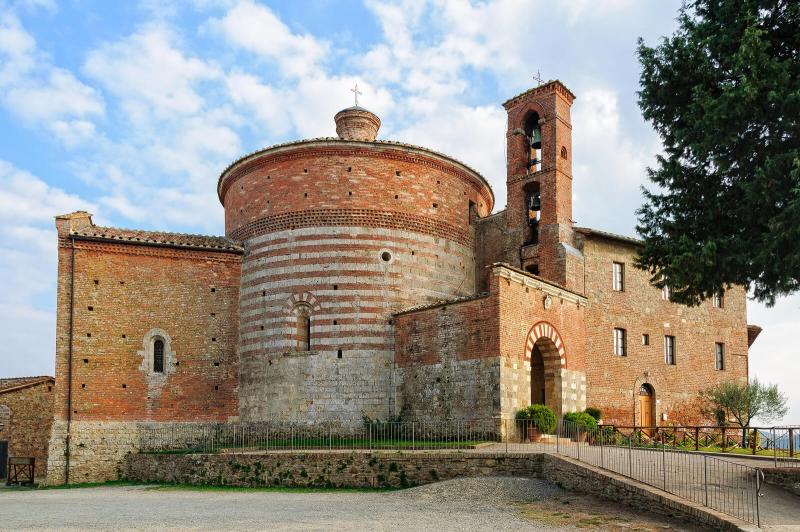Italy’s Sword in the Stone
ITA:

Use player to listen to Italian version
At least one ‘Sword in the Stone’ exists, and it’s in Italy, precisely in Tuscany’s Abbey of Saint Galgano, a former Cistercian monastery not far from Siena. The ruins that remain today tell of the ancient story of a knight turned monk who thrust his sword into a rock – and nobody has pulled it out yet.
The Abbey, the first Gothic-style church in Tuscany, was built between 1224 and 1288 to honor Saint Galgano, who lived nearby as a hermit, what is now known as the Eremo or Rotonda di Montesiepi. It is here that you can see the sword in the stone that Galgano planted, no longer a weapon, but rather, the symbol of the Cross.
So who was Galgano Guidotti? Born in 1148 near Chiusdino, about 30 kilometers southwest of Siena, Guidotti was a knight said to have lived a debauched life until the age of 32, when the Archangel Michael began appearing to him in visions. This led to Galgano’s conversion and his starting to preach around Siena and surroundings. He later retreated on the hill of Monte Siepi, the site of his visions of the Archangel.
To mark the change from his past life, Galgano thrust his sword into a rock (1180) promising to God he would never again raise his weapon against anyone. The news of the miracle of the ‘Sword in the Stone’ quickly spread around Siena, and pilgrims soon began to flock to Montesiepi to ask Galgano to perform other miracles (at least 18 have been documented).
Recent studies appeared to have confirmed that the sword dates indeed to the late 1100s–early 1200s.
To protect it from theft, the sword is now protected by a case. The chapel to the left of the altar houses frescoes by Ambrogio Lorenzetti, a major painter of the Senese school of the 14th century.
Almeno una "Spada nella Roccia" esiste, e si trova in Italia, precisamente nell'Abbazia di San Galgano in Toscana, un ex monastero cistercense non lontano da Siena. Le rovine che rimangono oggi raccontano l'antica storia di un cavaliere divenuto monaco, che conficcò la sua spada in una roccia - e nessuno l'ha ancora estratta.
L'Abbazia, la prima chiesa in stile gotico in Toscana, fu costruita tra il 1224 e il 1288 per onorare San Galgano, che viveva nelle vicinanze da eremita, nel luogo che oggi è conosciuto come l'Eremo o la Rotonda di Montesiepi. È qui che si può ammirare la spada nella roccia piantata da Galgano, in quale ha piantato, non più un'arma, ma piuttosto il simbolo della Croce.
Dunque chi era Galgano Guidotti? Nato nel 1148 vicino a Chiusdino, circa 30 chilometri a sud-ovest di Siena, Guidotti era un cavaliere che visse una vita dissoluta fino all'età di 32 anni, quando l'Arcangelo Michele iniziò ad apparirgli in una serie di visioni. Questo portò alla sua conversione e così iniziò a predicare attorno a Siena e dintorni. In seguito, si ritirò sulla collina di Monte Siepi, il luogo delle sue visioni dell'Arcangelo.
Per simboleggiare il cambiamento rispetto alla sua vita passata, Galgano affondò la sua spada in una roccia (1180) promettendo al Signore che non avrebbe mai più sollevato l’arma contro nessuno. La notizia del miracolo della “Spada nella roccia” si diffuse rapidamente intorno a Siena, e presto i pellegrini iniziarono a convergere su Montesiepi per chiedere a Galgano di compiere altri miracoli (almeno 18 sono stati documentati).
Recenti studi sembrano aver confermato che la spada risalga proprio alla fine del 1100-inizi del 1200.
Per proteggerla da furti, la spada è ora protetta da una teca. La cappella a sinistra dell'altare contiene affreschi di Ambrogio Lorenzetti, pittore di spicco della scuola senese del XIV secolo.











